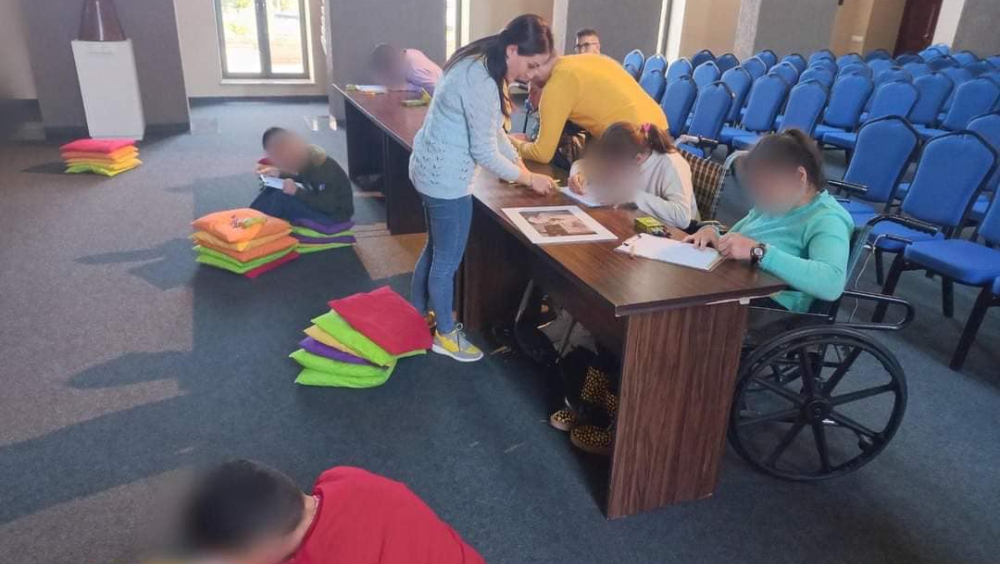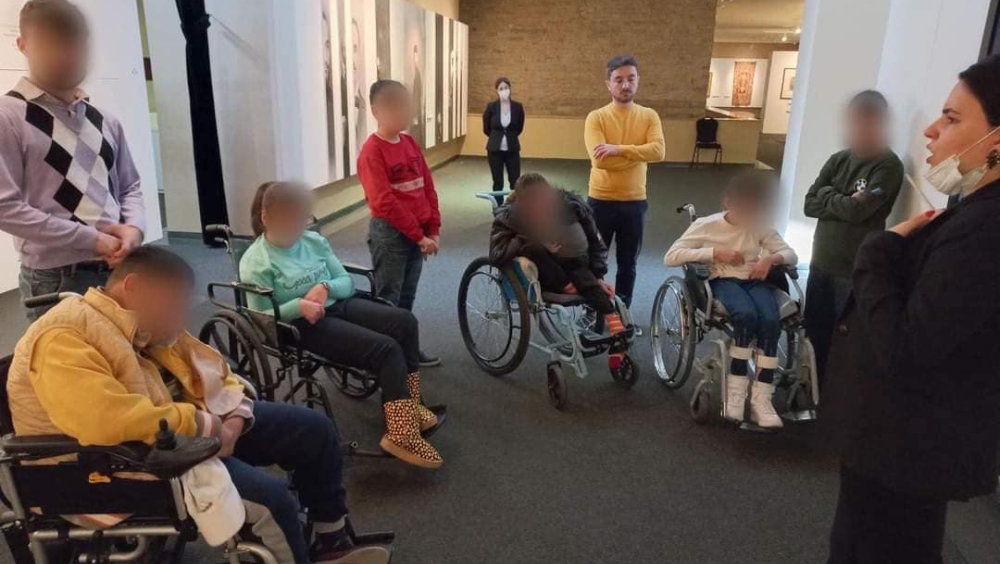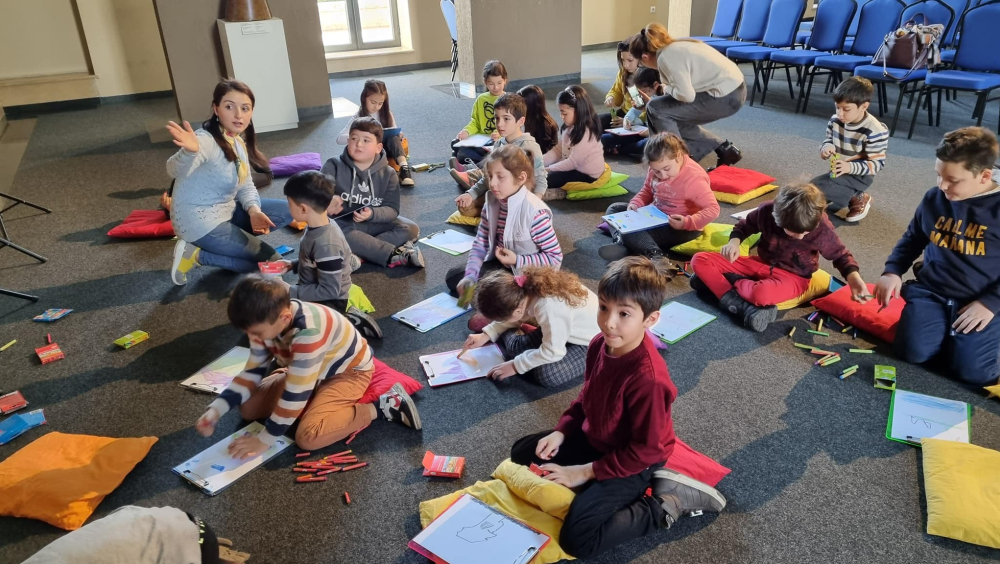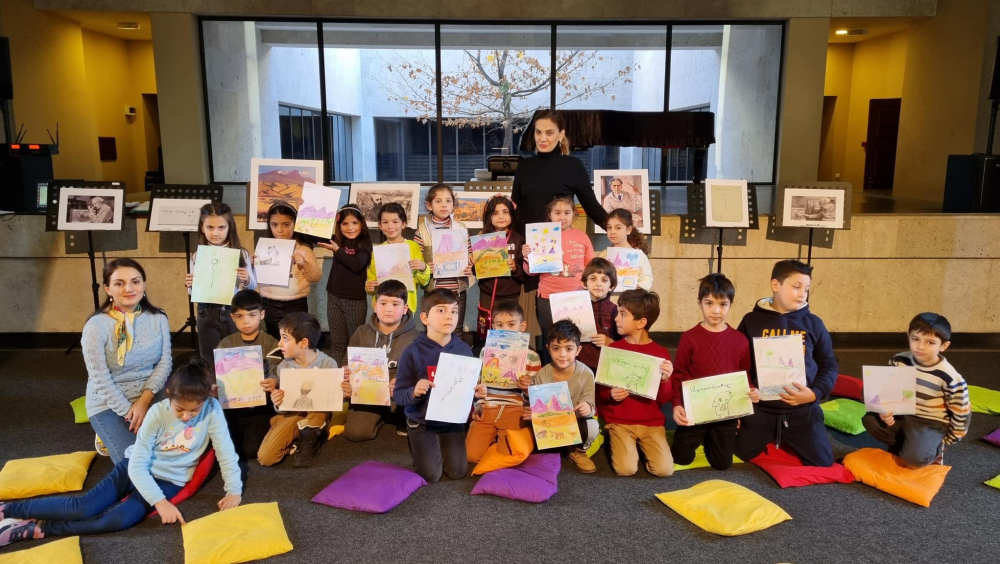Dreams come true
Many interesting occasions happen during our workday at the Komitas Museum-Institute. This is a story about some visitors who change our lives (at least mine). One of the visitors was sitting in front of the 300 member choir of Komitas Vardapet. While talking with him I learnt that his grandmother had been a singer of that choir. The talk with the man taught me much.
I started also telling the man about one of the groups that impressed me the most. Children from an orphanage with disabilities participated to one of the educational programs we conducted in the frames of European Heritage Days. Afterwards, we visited the orphanage ourselves as well.
I think that much must be improved in the work with those children. This is what we are working on.
Many interesting occasions happen during our workday at the Komitas Museum-Institute. But one of them touched me deeply; even while writing tears and smile simultaneously clasp me.
… One of the visitors was sitting in front of the same exhibit. He had been immovable already for an hour. I noticed the tears rolling down his cheeks. I approached.
“Do you feel well?”
“Do you know what this photo is?”, - he said without answering my question, rendering the photo on the wall in front of which she was sitting.
“Of course. This is Komitas’s Gusan choir. Komitas founded it in 1910 in Constantinople. Gusan was a mixed choir.”
“Do you know the people in the picture?” – he asked.
“Unfortunately, no.” - I said. “The choir consisted of as many as 300 people. We have information about a few of its members. I only know Komitas in this picture.”
“The fourth girl in the front row is my grandmother,” said the visitor, who was probably a man of my grandfather’s age, and handed me a family photo he had in his pocket.
“My grandmother was a famous doctor. She helped many in our city and everyone loved her,” she continued.
“She grew up in an orphanage. The only memory left of his large family is this photo. And… and she had tender voice she had probably inherited from her mother, whom she did not remember at all, but whom she had been looking for information about all her life.
“A very kind family had adopted by my grandmother when she was already 15 years old. He was very grateful to that family for not only growing her up, but also for each success she had in life.”
“You know, Komitas also lost his parents at an early age,” I continued intimately, sitting next to the elderly man. The priest of their city Kutahya led him to Vagharshapat when he was 12 years old. The Catholicos of All Armenians, listening him singing, accepted the boy to study at the Gevorgyan Spiritual Seminary. This incident had a fateful role in Komitas’s life and completely changed the further course of his life. Komitas said that if luck had not smiled him and he had not come to Etchmiadzin, he might have become a shoemaker in his native Kutahya, since his uncle, who was taking care of him, was a shoemaker, and he would probably continue the uncle’s craft.
The man wiped the sweat from his brow and said:
“My grandmother loved Komitas very much. She always sang Kakavik or Chinar es for herself while doing something. She was an intelligent woman and understood how great Komitas’s contribution was for the preservation and dissemination of Armenian music.
“But, you know, I never thought about the similarity of their destinies.
“Unfortunately, there are many children who lose their parents at an early age. But it is encouraging that good people appear in their lives, thanks to which children are able to discover their gifts.”
Returning to his point I tried to present some visions of our museum as well. “In our museum, children from orphanages are often hosted. We accept them with such love. It's a form of our gratitude to the good people who appeared in Komitas’s life to help him.”
I started telling the man about one of the groups visited us that impressed me the most.
It was late Septermber; we were conducting one of our programs in the frames of the European Heritage Days. We had specially invited pupils with disabilities. Students of one of the Yerevan orphanages also were among the participants. I told the children about Komitas's life and work.
I told them how Komitas dreamed of continuing his education in Europe; a good man learnt about his dream and gave him a scholarship; this is how Komitas studies at Humboldt University Berlin. I also showed Komitas’s diplomas and told the children that the real dreams definitely come true.
- I dream of becoming a doctor; I’ll become a world-famous singer; I want there to be no wars... shouted the pupils.
- I do not have a dream, - said one of the boys in a barely audible voice.
I said “I'm sure you have, you just do not want to tell about,” barely choking the cry in my throat.
We said goodbye to the children and promised to visit them. They replied instead that they would be waiting for us, but we would hardly visit them, because they had learned to be waiting endlessly…
Indeed we visited the orphanage; and it was Christmas. Miracles happen at Christmas and dreams come true. Of course, I would like the children to be visited by those whom were most expected, but… But our visit also made them very happy.
One of the girls told the text of the entire tour she had heard in the museum. I was the happiest guide in the world.
We conducted an educational program with the children. They got acquainted with the works of artists depicting Komitas in their works, then painted Komitas by themselves according to their own concepts.
We were encouraging everyone, but I was especially impressed by the work of one of the boys. I asked the teachers about his drawing skills. They said he had never painted before. He said that he always painted secretly from everyone and tore his pictures so that no one would see them. I asked him to continue painting and never to tear them again. He was the boy who had no dreams...
Many programs we have projected since then, even we have already implemented some of them. This was also my dream to start working with the children of orphanage and especially with thouse with disabilities. Indeed, dreams come true…
The issue of the children living in orphanages is of special focus of the Komitas Museum-Institute. Last couple of years we deal with them frequently and moreover, we project special projects for them. While we integrate those children to other groups as well, the case of the children with disabilities is difficult to solve, perhaps because our society is not always ready to accept those children as normal. Since any child in the world has a right to be a part of the society, to display their abilities and talent, to touch the art and culture similarly, we find one of our main activities to work with those children. While for European dimension the mentioned issues may seem solved and overcome, in my country I feel the importance to better work in the field.



